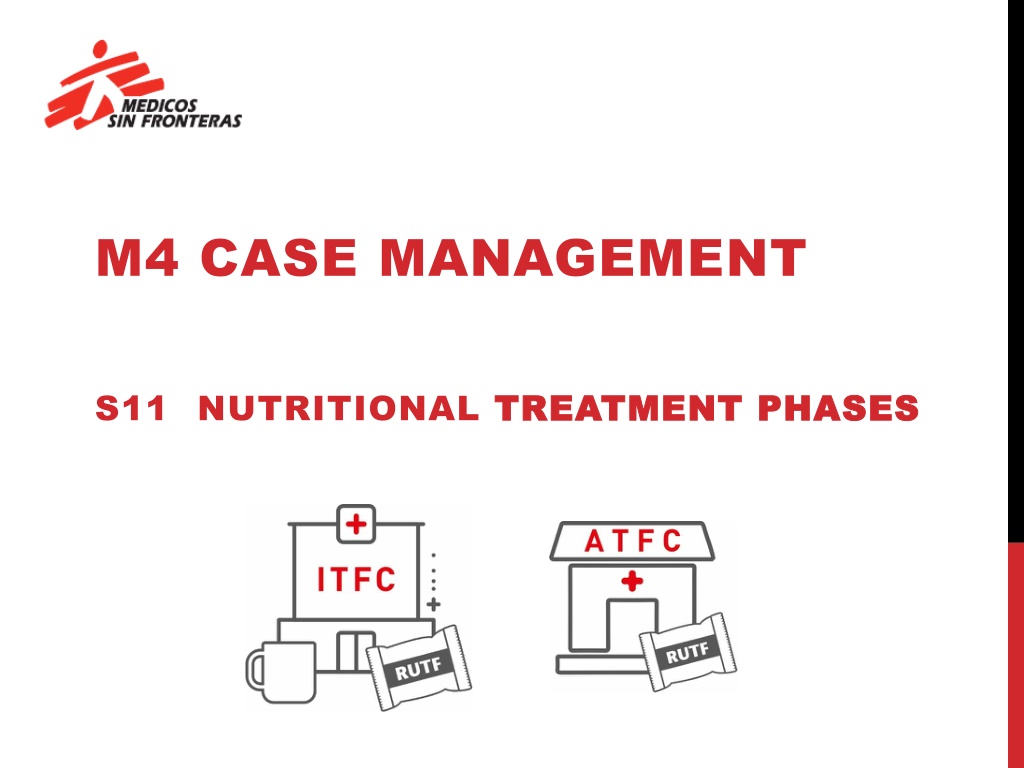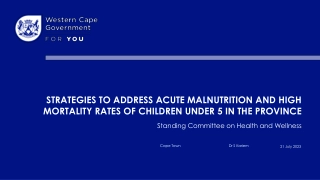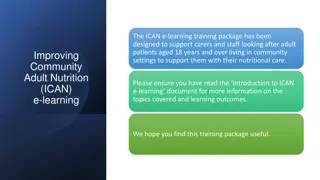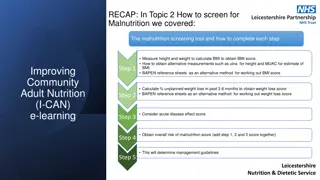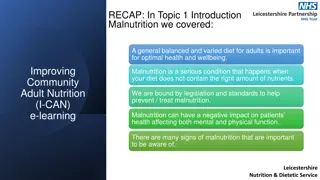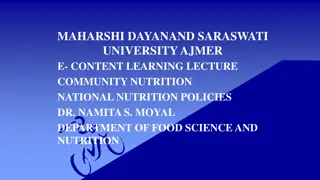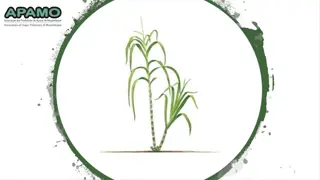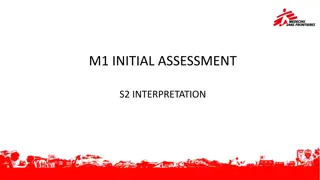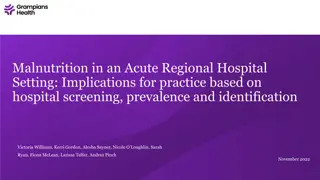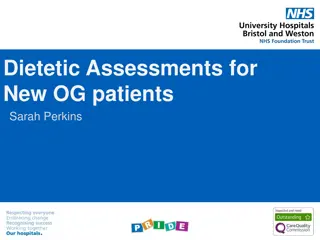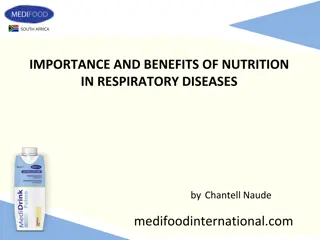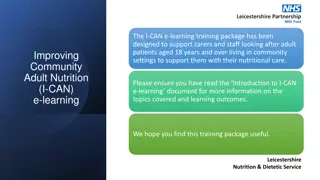Understanding Nutritional Treatment Phases in Pediatric Malnutrition
This session covers the different phases of nutritional treatment in pediatric malnutrition programs, focusing on objectives, specifics, and criteria for transitioning between phases. An illustrative case of Annika, a 3-year-old in the Transition Phase, is provided for practical application and understanding of moving from Transition to Phase 2. Detailed information on the Stabilisation Phase, Transition Phase, and Rehabilisation Phase in the context of a 6-59 months age group is presented with clear objectives and treatment plans. The summary table outlines the nutritional goals, duration, and meal requirements for each phase, aiding health professionals in managing children with malnutrition effectively.
- Nutritional treatment
- Pediatric malnutrition
- Transition Phase
- Stabilisation Phase
- Rehabilisation Phase
Download Presentation

Please find below an Image/Link to download the presentation.
The content on the website is provided AS IS for your information and personal use only. It may not be sold, licensed, or shared on other websites without obtaining consent from the author. Download presentation by click this link. If you encounter any issues during the download, it is possible that the publisher has removed the file from their server.
E N D
Presentation Transcript
M4 CASE MANAGEMENT S11 NUTRITIONAL TREATMENT PHASES TREATMENT PHASES
OBJECTIVES OF THE SESSION At the end of this session participants will be able to: 1. Understand the different phases of nutritional treatment in a nutrition programme 2. Understand the objective and specifics of each of the phases. 3. Understand the criteria for moving between phases.
INTRODUCTORY CASE ANNIKA: 3-years-old. Ward round. ITFC. 3rd day in Transition Phase. Marasmus She is in the Transition Phase taking RUTF paste-based very well. She has repeatedly requested more quantities of food. No medical symptoms. Examination: Alert. Respiratory Rate: 28 rpm. Heart Rate: 95 bpm. O2 Sat.: 100%. No fever. No respiratory distress. Normal pulse, warm hands and feet. Capillary Refill 1 second. 4 cm enlarged spleen. Rest of examination is normal. QUESTION: COULD ANNIKA BE CHANGED FROM TRANSITION TO PHASE 2 (ATFC)?
Age SUMMARY TABLE OF NUTRITIONAL TREATMENT for Children 6-59 months 6 59 Months Objective Duration NUTRITIONAL TREATMENT F-75 - QUANTITY 135ml/kg/day 8 meals/day 100kcal/kg/day maximum Restore metabolic function Stabilise clinicalcondition Begin resolution of oedema PHASE 1: STABILISATION -Inpatient - I T F C Usually 1-7 days Ensure return of appetite and acceptability of RUFT Ensure ongoing clinical improvement Continued improvement of oedema OPTION A: RUTF-Based I T F C TRANSITION PHASE -inpatient- OPTION B: F-100 Based or QUANTITY 6 or 8 meals/day 135kcal/kg/day Usually 1-3 days ATFC RUTF Promote weight gain and return to regular development Recovery PHASE 2 REHABILISATION -outpatient- -Rarely ITFC - QUANTITY prescribed by weight 200kcal/kg/day Family meals if stillhungry after RUTF consumed + 30-35 days (after ITFC)
INTRODUCTORY CASE ANNIKA: 3-years-old. Ward round. ITFC. 3rd day in Transition Phase. Marasmus She is in the Transition Phase taking RUTF paste-based very well. She has repeatedly requested more quantities of food. No medical symptoms. Examination: Alert. Respiratory Rate: 28 rpm. Heart Rate: 95 bpm. O2 Sat.: 100%. No fever. No respiratory distress. Normal pulse, warm hands and feet. Capillary Refill 1 second. 4 cm enlarged spleen. Rest of examination is normal. QUESTION: COULD ANNIKA BE CHANGED FROM TRANSITION TO PHASE 2 (ATFC)? Yes, she can go from ITFC to ATFC. Because she has appetite, eats the RUTF well and does not have any medical complications which require her to be in hospital
